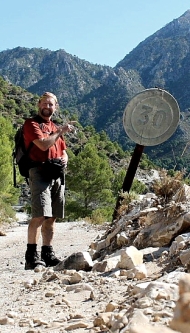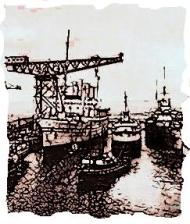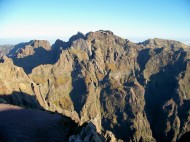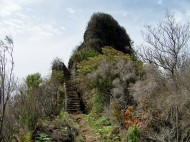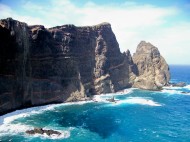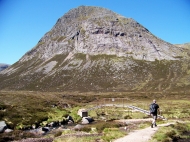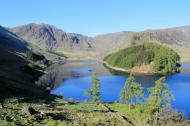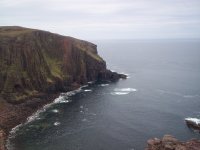THIS is a place to put your feet up, a virtual bothy where boots dry on the hearth, rain taps the window, there???s a pan of tea steaming on the stove and a pile of magazines to fill the gap between late afternoon and sleeping-bag time. These articles have absolutely nothing in common except they were written by me with the intention to entertain, they contain historical fact supplemented, on occasion, by original research ??? and they relate to the great outdoors.
Stamford Bridge: A Long Walk to the Last Battle
 NEARLY a thousand years ago two battles took place that determined the future of Britain. The first was fought at Stamford Bridge, near York, the second at Hastings less than three weeks later. Both involved the Anglo-Saxons under Harold Godwinson. King Harold won the first, and, as we all know, lost the second. This is a walk through history from York to Stamford Bridge, following the River Ouse to Fulford, where another battle occurred, then along the Minster Way to the River Derwent and upstream to a field were 11,000 men met their maker. It???s a good story because it???s true. And it???s a great walk because, quite simply, it is. Click here to step back to September 1066.
NEARLY a thousand years ago two battles took place that determined the future of Britain. The first was fought at Stamford Bridge, near York, the second at Hastings less than three weeks later. Both involved the Anglo-Saxons under Harold Godwinson. King Harold won the first, and, as we all know, lost the second. This is a walk through history from York to Stamford Bridge, following the River Ouse to Fulford, where another battle occurred, then along the Minster Way to the River Derwent and upstream to a field were 11,000 men met their maker. It???s a good story because it???s true. And it???s a great walk because, quite simply, it is. Click here to step back to September 1066.
A Blackpowder Blast From the Past
 THE Cumbrian slate industry has shaped the Lake District with its quarries and the people who worked in them. It???s an industry that still thrives. I worked in the industry for several years during the 1980s, driving tunnels for heading blasts: boring shotholes; charging them with dynamite; detonating the charges; clearing the muck by hand; boring shotholes . . . This is a story about a heading blast that took place in December 1985 and dislodged several thousand tonnes of blue-grey slate. It was hard, dirty, and very wet work. To read the account, CLICK HERE
THE Cumbrian slate industry has shaped the Lake District with its quarries and the people who worked in them. It???s an industry that still thrives. I worked in the industry for several years during the 1980s, driving tunnels for heading blasts: boring shotholes; charging them with dynamite; detonating the charges; clearing the muck by hand; boring shotholes . . . This is a story about a heading blast that took place in December 1985 and dislodged several thousand tonnes of blue-grey slate. It was hard, dirty, and very wet work. To read the account, CLICK HERE
Walking the Old Corpse Road ??? Mardale to Shap
 THE last person to leave Mardale feet first for Shap was John Holme, in June 1736. Poor old John was as dead as they come. Whether he was strapped to a packhorse or nailed in a coffin and carried on the shoulders of four stout lads is a point open to debate. But he was the last person to make the journey along the old corpse road in the traditional fashion. And he brought the curtain down on a practice that was shrouded in myth and superstition. God rest his soul . ??I???m retracing John Holme???s final journey across the fells. It???s a walk that opens a door into a darker side of Lakeland . . . ENTER HERE
THE last person to leave Mardale feet first for Shap was John Holme, in June 1736. Poor old John was as dead as they come. Whether he was strapped to a packhorse or nailed in a coffin and carried on the shoulders of four stout lads is a point open to debate. But he was the last person to make the journey along the old corpse road in the traditional fashion. And he brought the curtain down on a practice that was shrouded in myth and superstition. God rest his soul . ??I???m retracing John Holme???s final journey across the fells. It???s a walk that opens a door into a darker side of Lakeland . . . ENTER HERE
Glen Roy ??? A Parallel World
CHARLES DARWIN visited Glen Roy in 1838 and made the biggest blunder of his life. His mission was to prove the valley had once been submerged beneath the sea and that the mysterious ???Parallel Roads??? that slice across the mountainsides are the remains of ancient beaches ??? not tracks built by fairies or the Celtic giant Fingal. He was proved wrong by a man from Switzerland. The sea had no hand in it ??? and neither did Fingal or the fairies. The Parallel Roads were the result of something far more spectacular ??? and colder . . . CLICK HERE to walk along the Parallel Roads and unravel an ancient puzzle.
Bleath Gill: Whatever Happened to the Heroes?
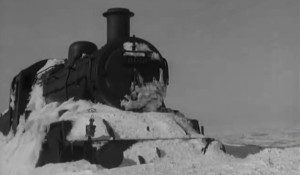 ONE dark winter night in 1955 a loco pulling a load of goods wagons got stuck in a snowdrift on the highest mainline railway in England. The driver was attempting to cross the Pennines from Kirkby Stephen to Barnard Castle. But the loco, the 78018, belched its last gasp of steam at a place called Bleath Gill, was abandoned to the elements, and froze into a solid block of ice. Its rescue, five days later, was unremarkable at the time because that sort of thing happened. What makes it remarkable today is that the episode was captured on film and saved for the nation. This is the story of the rescue, a walk along the butchered trackbed to where it happened, and a plod through our uncomfortable history. If you want to read more, pull this communication cord. You will not be fined ??25.
ONE dark winter night in 1955 a loco pulling a load of goods wagons got stuck in a snowdrift on the highest mainline railway in England. The driver was attempting to cross the Pennines from Kirkby Stephen to Barnard Castle. But the loco, the 78018, belched its last gasp of steam at a place called Bleath Gill, was abandoned to the elements, and froze into a solid block of ice. Its rescue, five days later, was unremarkable at the time because that sort of thing happened. What makes it remarkable today is that the episode was captured on film and saved for the nation. This is the story of the rescue, a walk along the butchered trackbed to where it happened, and a plod through our uncomfortable history. If you want to read more, pull this communication cord. You will not be fined ??25.
The Search for John Bolton’s Rock Hotel
 ON September 25, 1863, John Bolton walked the couple of miles from his house in the Furness village of Swarthmoor to catch the early train north from Lindal station. He???d had no breakfast, so on arriving in Whitehaven at 9.30am, he purchased a couple of loaves and set out on foot for the western fells. Bolton was in his 73rd year. It was his intention to spend a night??or two??sleeping rough in the fells ??? in his Rock Hotel ??? while searching for fossils. It was an adventure that turned into a nightmare when the Lake??District was hit by one of the worst storms for many years. This is Bolton’s story, and my attempt to track down the Rock Hotel he made his home. READ ARTICLE
ON September 25, 1863, John Bolton walked the couple of miles from his house in the Furness village of Swarthmoor to catch the early train north from Lindal station. He???d had no breakfast, so on arriving in Whitehaven at 9.30am, he purchased a couple of loaves and set out on foot for the western fells. Bolton was in his 73rd year. It was his intention to spend a night??or two??sleeping rough in the fells ??? in his Rock Hotel ??? while searching for fossils. It was an adventure that turned into a nightmare when the Lake??District was hit by one of the worst storms for many years. This is Bolton’s story, and my attempt to track down the Rock Hotel he made his home. READ ARTICLE


